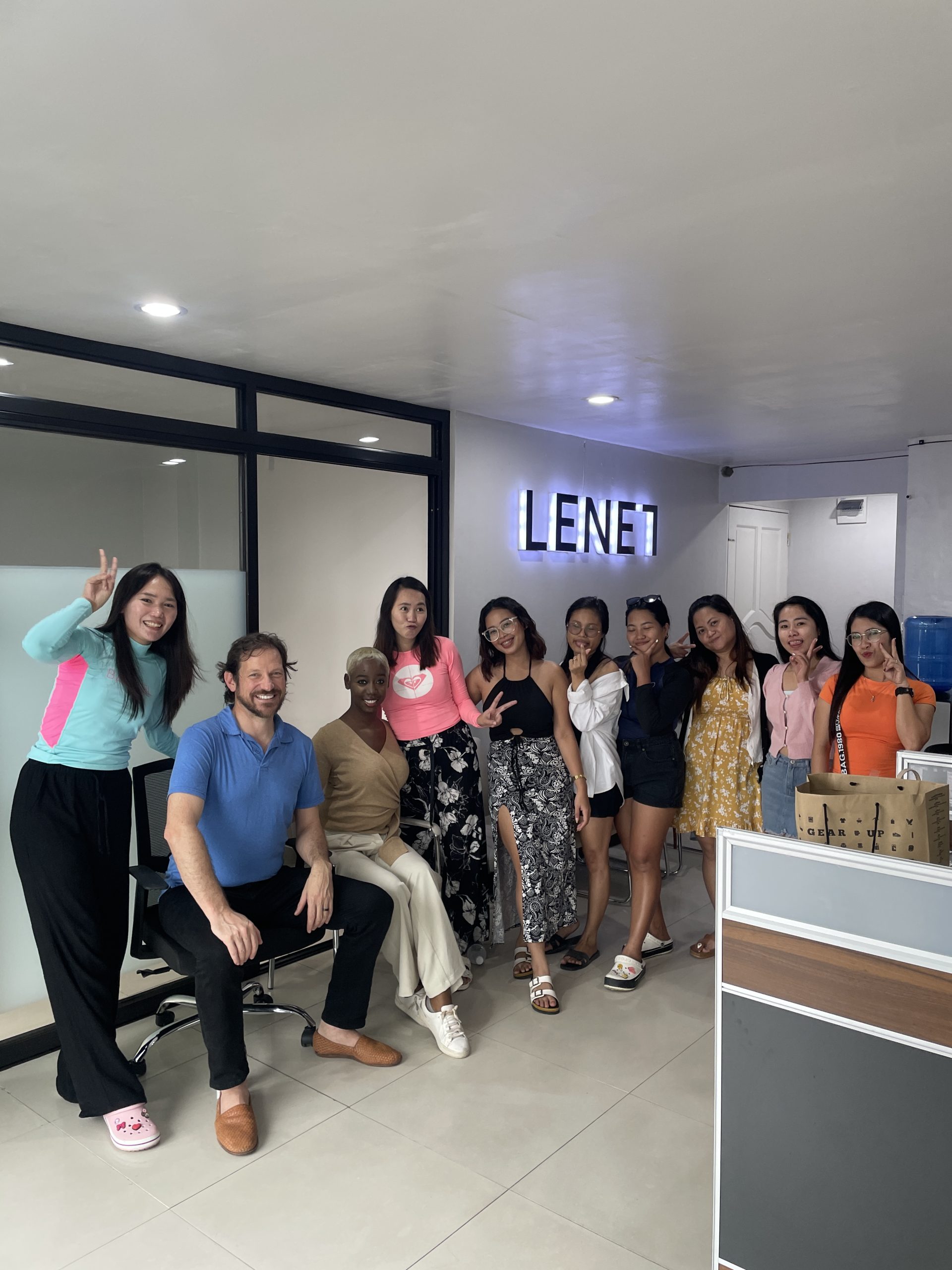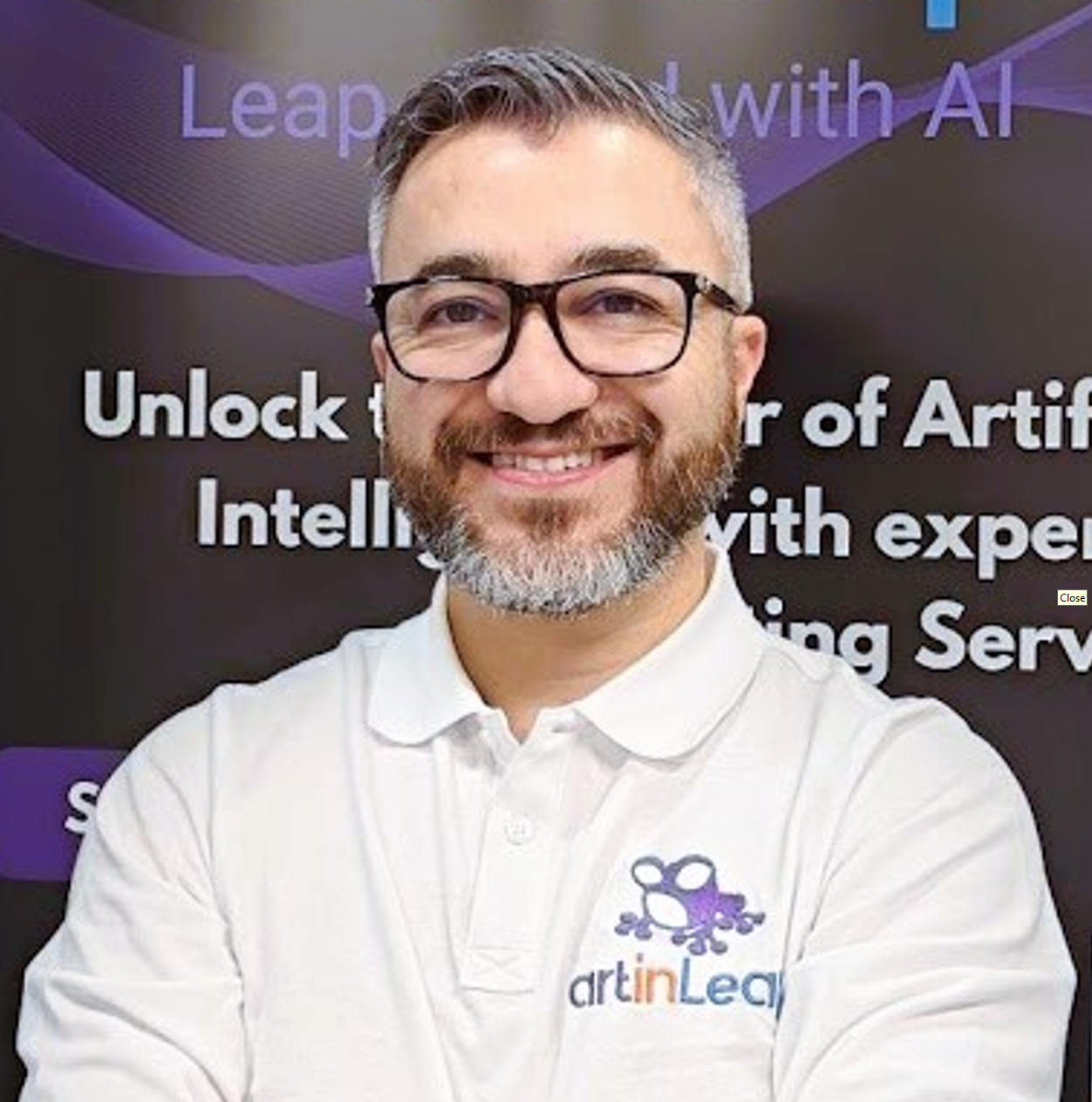Olivier Havette: “With LENET, AI Becomes the Growth Engine for European Companies in the United States”
By Pascale Caron
In the world of IT services, Olivier Havette is a French entrepreneur who has established his expertise in the United States by helping European companies succeed in their market expansion. As the CEO and founder of LENET, Olivier and his team provide comprehensive support in technology infrastructure, strategy, and more recently, artificial intelligence. In this interview, he shares his vision, the challenges encountered, the tangible benefits AI can bring, and practical advice for SMEs looking to take the leap.
Olivier, can you tell us about your sector and how LENET positions itself in the United States?
LENET specializes in IT services for companies, mainly European, looking to establish and grow in the United States. We offer support in technology infrastructure, cybersecurity, and now AI. We operate across all time zones, with clients in the U.S., Canada, South America, and even the Middle East and Asia. However, our core target remains the American market. I started LENET over 15 years ago, initially on my own. Today, we are a team of over 30 people, supporting small companies with five employees to businesses generating a billion dollars in revenue. LENET’s primary goal is to support our clients in their international development by optimizing their IT to make this growth successful.
AI and cybersecurity are at the heart of our strategic discussions. Companies are increasingly aware of the importance of securing their data. Thanks to our regular audits, they sleep better at night, knowing they’re protected, although some still have room for improvement. AI, on the other hand, is in full expansion. They want to learn and understand how to apply it to boost their competitiveness. During our quarterly strategic reviews, AI is always a topic of discussion, with clients expressing a clear desire for coaching in integrating AI into their business processes. Depending on the size and needs of each client, we manage their IT end-to-end. Unlike traditional providers who set up a system and then disappear, we offer ongoing support with a long-term approach that is particularly appreciated.
How does AI practically integrate into your operations and those of your clients?
Some clients have opted for custom solutions, but the expected benefits are not always achieved. I have several examples of projects where the anticipated results didn’t materialize. What’s currently working well are platforms like Gemini for Google Workspace or Copilot for Office 365. We’re really in an initial phase where commonly used tools in companies are incorporating an AI layer. Initially, our priority was to establish “AI Policies” for each client. As soon as AI emerged, being viewed as a “black box,” we started educating businesses. Employees needed to know how to use AI securely and compliantly since they would use it anyway. In 2022, the rise of tools like ChatGPT 3.5 made AI more accessible, encouraging employees to explore these technologies. Today, we are still in a period of reflection. Clients have not yet abandoned their usual platforms for alternative solutions, even if these could provide more advanced AI integrations. This transition is not imminent; the focus is on observing and optimizing what is already in place.
And within LENET?
AI has several applications with us. Each department uses tools tailored to its specific needs. The most effective for us is ticket management: each ticket is analyzed by AI, which provides recommendations. This is especially helpful for less experienced technicians, offering them suggestions on points to check. This AI doesn’t replace human intervention, but it adds internal annotations to each ticket. It suggests troubleshooting steps and follows the client and developer actions, indicating interesting stages as progress is made. We use software called REWST, increasingly popular in our industry, which integrates well with ConnectWise, our central management system, an ERP for IT companies. ConnectWise has long promised AI enhancements, but deployment has been slow. Meanwhile, smaller, innovative platforms like REWST are handling tickets more proactively. Some of my fellow CEOs use more advanced tools capable of reading the entire history, comparing applied responses, and proposing resolutions based on that data. They go beyond the individual analysis of each ticket. We have years of accumulated data, which would be valuable for continuously improving AI solutions. Although I have often been an “early adopter,” with the company’s growth, I now prefer to wait for feedback from my peers before jumping into beta-testing. Every quarter, I join a group of CEOs to discuss our tools and best practices, which is how REWST was recommended to us. In our marketing team, we primarily use Claude for drafting documents and emails. The results often surpass those from the paid version of ChatGPT, particularly for more polished content. Claude seems to produce a style more suited to our business, with specific nuances depending on the tone needed. Our manager even showed me examples to prove its effectiveness, and I must say the differences are quite noticeable. We also use Claude to suggest marketing plans. We use ChatGPT for strategic brainstorming, Canva AI for design, and Midjourney, which gives very good visual results. For developers, ChatGPT is invaluable for generating code and scripts. Whether it’s for maintenance scripts or backups, it provides very effective solutions. One of our highly skilled developers can complete these tasks in record time, reducing our staffing needs for some operations. In HR, we use AI to draft job offers and job descriptions, saving us a lot of time compared to creating them from scratch. It’s also interesting for email corrections. Although our team is international, we work in the United States, so perfect English is essential. We use Grammarly, which has evolved with an AI integration, and the results are very convincing, giving a strong impression of language proficiency. For meeting notes, I use TLDV, as it also supports French. I initially started with Firefly, which is very popular at LENET but limited to English. TLDV allows me to translate and share summaries with colleagues in their preferred languages, a real plus for a multilingual team. That said, Firefly remains the most used solution at LENET. For sales, we have a video behavioral analysis tool that evaluates client reactions during calls. This sophisticated tool is a bit more expensive but extremely useful for refining our sales processes, offering real-time insights on how clients receive our messages.
Cybersecurity remains a crucial area. How does AI help you address security challenges?
AI helps us analyze massive volumes of data to detect anomalies. We use, for example, compliance audit software. For a client in the electrical industry, we integrated ChatGPT to review Department of Defense (DoD) requirements. This saves us time and ensures a more accurate analysis. Cybersecurity often involves searching for a needle in a haystack, and AI proves to be invaluable for identifying these weak signals.
What positive changes have you seen in LENET’s dynamics thanks to AI?
The most significant changes are shorter response times and fewer back-and-forths between departments, particularly for complex technical questions. In the past, sales teams frequently had to reach out to operations for information. Now, they can ask an AI directly. The answers may not be as precise as a developer’s, but they’re good enough to move forward, allowing developers to stay focused on their work. This enables progress in proposals and only involves experts once there’s a solid foundation. For example, with technical onboarding for a new employee at a client’s company, we have about 70 steps to complete. We need to configure various software, request access, prepare the computer, install specific applications, adjust permissions, and create users on each one. Previously, each step required manual action to navigate between programs and configure settings. This process always required a person to orchestrate everything, even though it wasn’t the most interesting task. Now, instead of handling each action separately, we’ve set up a system that automatically manages the entire process. This applies to onboarding and offboarding, which used to take a lot of time.
What challenges do you face with AI integration?
AI generates a lot of excitement but also anxiety. Some employees question the longevity of their roles within the company. One of the main challenges is showing that AI is not here to replace them but to enhance their work. It frees employees from repetitive tasks, allowing them to focus on more complex, high-value tasks. We need to foster this AI culture by explaining that the goal is to augment skills, not replace people. Some jobs will be more impacted than others. I have a recent example: each year, my accountant submits my tax return — this year, it was due by October 15 in the United States. Typically, I receive the 170-page document five days before and just check if everything seems correct. This time, instead of reviewing it myself, I decided to send the PDF to ChatGPT to find optimization opportunities. The AI provided several adjustment suggestions, which I forwarded to my advisor, who admitted he hadn’t thought of them. This highlights that an accountant can’t know every deduction option for each client, whereas AI can analyze every detail without time limits. In some instances, his response was, “Oh, I didn’t know.” That’s not what I expect from a tax expert — he should be asking the right questions. AI enables me to have a more precise conversation with him, even without mastering all aspects. In the end, I changed accountants!
What advice would you give SMEs hesitant to adopt AI?
For SMEs, I recommend a gradual integration. Many want to revolutionize everything, but it’s often more effective to start with small improvements in existing processes, like reducing repetitive tasks. Once teams become familiar with AI tools and see the added value, they can move to the next level. Companies use a lot of applications, and I think they should maximize their potential before looking elsewhere. Today, most software providers integrate AI into their platforms. Some do it effectively, others less so, and in a few years, we’ll adapt our system choices based on who successfully transitions. For now, the idea is to test what’s available within what we already have. In terms of management, I think they should set the tone: encourage teams to try, explore, and take the time to experiment. After that, it’s essential to gather their feedback to guide the next steps. Most companies — and our clients in particular — allow the use of these tools, provided that confidentiality rules are respected. Where management could make a difference is by encouraging more feedback. Teams are often too focused on their tasks to share what works or doesn’t. Organizations need to come together to share successes and challenges and learn from each other’s experiences. This enables everyone to learn from best practices and improve together.
In your opinion, what is the future of AI in the IT services sector?
It allows us to move faster, but the competition also benefits from it. We don’t see a significant impact on revenue yet. However, AI improves service quality, especially in ticket management. It enables less experienced technicians to handle more complex problems, freeing up time for consulting activities and personalizing client support. We’re moving from repetitive operations to true added value by offering more consulting. Any company that neglects AI risks falling behind the competition. In the future, every IT business will be an “AI business,” just as it’s now a “technology business.” Cycles have accelerated. While technology renewal took five years, then three, we now see changes every quarter. The limiting factor is human capability, as it can’t keep up with this speed. It’s essential to manage this transition carefully and take it one step at a time. I believe the future lies in a complementarity between AI and the team. It’s crucial to maintain expertise for consulting and service personalization tasks.











